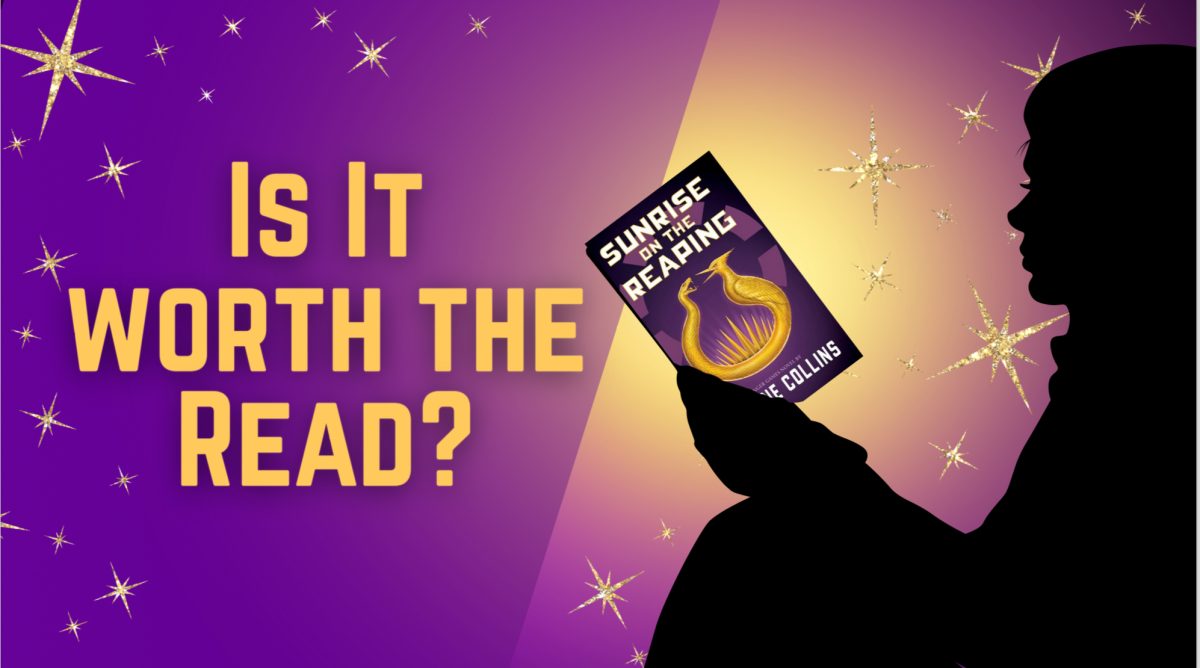What does one do when they’re being threatened with the loss of everything worth fighting for? This is one of the critical questions explored in Sunrise on the Reaping, the latest novel by Suzanne Collins, author of The Hunger Games.
Released on March 18, the book takes place 24 years prior to the events of The Hunger Games, during the 50th Games and the second Quarter Quell. It follows the tragic story of District 12’s drunken mentor, Haymitch Abernathy. Rather than the grouchy old man fans have come to know, Haymitch is portrayed as a charming 16-year-old with a rebellious spirit. That same rebelliousness earns him a powerful enemy, being President Snow. As the story progresses, Haymitch must balance obeying Snow’s wishes while secretly plotting to destroy the arena from within.
What’s noteworthy?
As the story unfolds, readers get to see the world of Panem in a new light. Set in a tense period between the events of the original Hunger Games trilogy and the standalone prequel The Ballad of Songbirds and Snakes, this novel reveals the shifting of power in Panem.
This installment shows how the Districts became poorer than they were in The Ballad of Songbirds and Snakes, but not yet as impoverished as in The Hunger Games. This helps to highlight President Snow’s rise to power and the decay of the Districts that follows.
In addition to expanding our understanding of Panem, the novel gives more depth to beloved characters from the series, including Mags, Wiress, Effie, Beetee, Plutarch, Snow, and even Katniss Everdeen’s parents. Collins does a remarkable job of turning these characters into real people with hopes, flaws, and pain.
Told from Haymitch’s perspective, the story offers a deeper understanding of his life and the brutal reality of the fate of a victor. Haunted by the true horrors of the Games, Haymitch—like many others—was never capable of truly coming back from the arena, leaving part of him that he’ll never get back.
Through these characters, Collins expertly explores themes of social rebellion, tyranny, and mental health. She isn’t afraid to ask uncomfortable questions, such as: Is there a line those in power won’t cross? Who can you trust when the whole world is against you? And how do you leave a lasting mark when everything seems to be lost?
What was lacking?
Despite its strengths, the novel relies heavily on readers’ familiarity with the series. Although it was written as a standalone, Sunrise on the Reaping depends significantly on nostalgia and the return of familiar characters. Readers who haven’t read the earlier books may not feel the emotional impact of this work due to lack of understanding.
The pacing also feels rushed at times—especially during the climax of the Games—where it seems like the author was racing to the finish. A slightly longer format could have given the story room to breathe and more fully explore its emotional beats.
I also appreciate that Collins made an effort to give Haymitch a Southern dialect, reflecting District 12’s Appalachian roots. While this adds authenticity, it can occasionally make dialogue and narration difficult to understand.
Is it worth the read?
Overall, Sunrise on the Reaping is a powerful novel that’s definitely worth reading. It tackles difficult and timely issues through a compelling story that expands on the world of Panem. While it caters primarily to long-time fans of the series, it still offers enough context to engage new readers.
With its thought provoking themes, emotional depth, and strong character work, Sunrise on the Reaping is an action-packed novel worthy of a place on your shelf.








